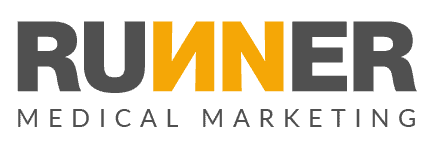John and Chris discuss how important it is to move beyond the standard contact forms on your website to connect with prospects and bring in more leads, especially when connecting with prospective patients on healthcare websites.
Find out how we use custom assessments and conversational marketing in place of standard lead generation forms to create more value for the prospect and bring in more qualified leads for our clients.
Interested in using these tactics to super-charge lead generation for your business? Request a free consultation today!
See Full Transcript Below:
John Keehler: Hi. I’m John Keehler.
Chris Lueking: Hi. I’m Chris Lueking.
John Keehler: Today, we’re going to talk about something that’s particularly important for health care marketers, and that is thinking beyond your default lead forms. What do we mean by that? For most brands out there, they have this default “Contact us” form, right, on every website-
Chris Lueking: Top of the page.
John Keehler: Top of the-
Chris Lueking: “Contact us.”
John Keehler: … page. Tells everyone, “I’m just going to talk to a salesperson.” Right?
Chris Lueking: Yeah. That’s what it means.
John Keehler: “If I submit this.” We know that people are really motivated by very clear calls to action, and today, we’re going to talk about two specific tactics you can use that have been really successful for us. The first tactic we’re going to talk about are what we call assessments. You want to talk a little bit about what an assessment is?
Chris Lueking: Sure. The idea of an assessment really branches off of the idea that a good contact form provides reciprocity to the user. We’ve all seen contact forms that you fill out your information, and you get like a whitepaper, a downloadable PDF. Assessments do that in a slightly different way. With an assessment, we’re looking at a bit of a longer form, and we’re asking the user to provide information about themselves. In the health care industry, we’re often doing this in sort of a pain assessment way. We’re asking the user to tell us, “Where are you experiencing pain? What kind of pain are you experiencing?”
Chris Lueking: By doing that, we’re really seeing two big results. The first one is that the user is more invested. They feel like they’ve committed some time to filling out this form, and the second thing is that the sales team now has a lot more information to go off of when they contact that user. It’s really the starting point for us to be able to segment that audience into sciatica pain, back pain, those kinds of things.
John Keehler: I love a couple things about this assessment approach. The first is, it doesn’t really feel like a form, right?
Chris Lueking: Right.
John Keehler: From a design perspective, they don’t feel like a typical form fill experience.
Chris Lueking: A quiz or a survey.
John Keehler: It can be very visual, include imagery and things like that as a part of them. The other thing that I really like is, it really does make you feel, as a prospect, when they’re going through this process, it’s getting them closer to that end goal. Right? Even though they might just be answering some questions, they feel like they’re getting a little bit of resolution or at least getting closer to figuring out and solving some of their issues.
John Keehler: The second tactic that we want to talk a little bit about is something called conversational marketing. Right? This is, obviously, a buzzword in the industry right now. What we really mean is chat or messenger features on a website. These are really, really good at getting people who might not fill out a form to engage in some sort of a small way. Right?
Chris Lueking: Right, and they’re also really good at answering quick questions. If I have a simple question about the business, I might not want to commit to filling out that contact form, knowing that I might get up a follow-up email in a few days. An instant chat with a live person or even a bot could give me that instant gratification.
John Keehler: Yeah, so there are a lot of platforms that do this really well. HubSpot Conversations, obviously, exists now, but there’s also platforms like Drift, Intercom, Olark. There’s a few of these out there, and one of the things that I really love that a lot of these platforms do is, they’ll ask a very simple question when you first engage with them, which is, “Hey, in case we get disconnected, give me your email.”
Chris Lueking: Yeah, in case anything goes wrong technically, which we know never happens.
John Keehler: Yeah.
Chris Lueking: Right?
John Keehler: These are absolutely perfect at creating incremental leads for you. Every client we’ve worked with, with conversational marketing features, they really do get people to become leads that would not have become leads before. Right? You’re leaving-
Chris Lueking: Right.
John Keehler: … money on the table if you’re not using a feature like this, for a lot of brands. The other thing that’s really interesting is, we’re starting to see some new offerings in this area, so Drift, as an example, has a really great feature they call conversational landing pages. It’s essentially taking that conversation out of the little messenger box and really making it a full-page experience. It’s pretty neat, and I think just like with the assessments, you don’t feel like you’re filling out a form.
Chris Lueking: Right. Right. More of an interaction than a sales interaction.
John Keehler: I think really the overall takeaway for health care marketers, but again, anybody else who’s working in marketing, is thinking beyond that just default “Contact us” form. Experience is really key, and this really is an area where I don’t feel like people don’t push boundaries enough. From a results perspective, I mean, we’ve seen, again, lots of incremental leads, much higher conversion rates, right, than you would get through a typical form.
Chris Lueking: Yeah, and if you’ve tried something like this and you’ve had success, or you have questions about it, we’d love to hear from you.




